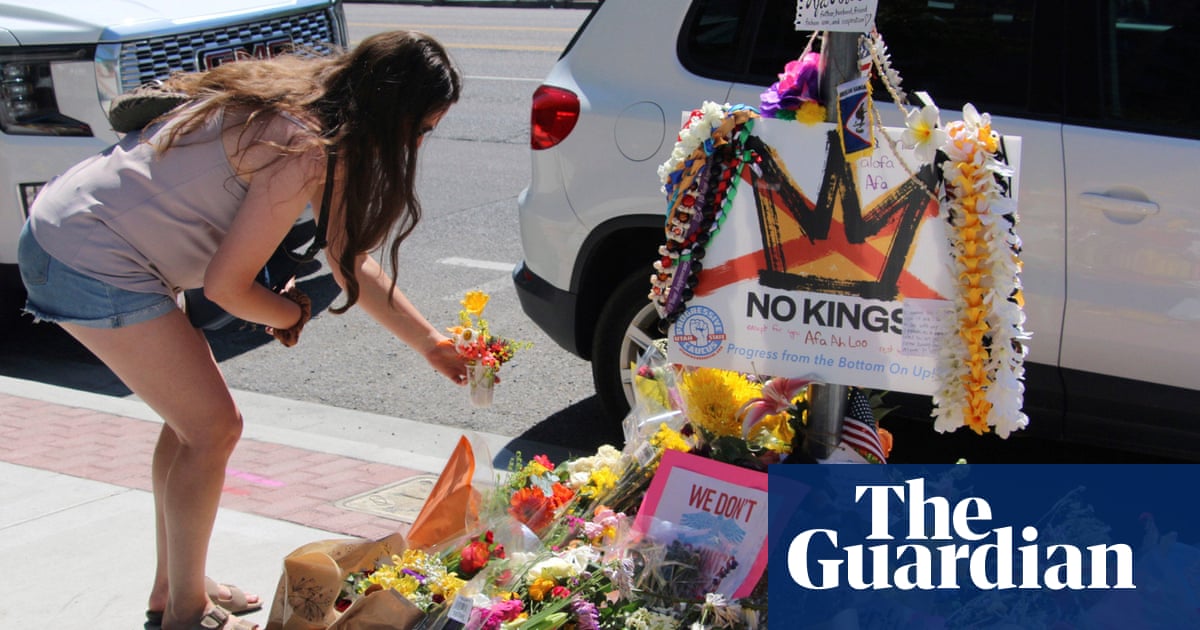A man jailed on suspicion of murder for allegedly brandishing a rifle at a “No Kings” rally in Utah before an armed safety volunteer fired and inadvertentlykilleda protester has been released from custody.
Local district attorney Sim Gill’s office said on Friday that it was unable to make a decision on charges against Arturo Gamboa after the 14 June shooting that killed demonstrator Arthur Folasa Ah Loo – but that the investigation into the slaying continues.
Salt Lake City police had said Gamboa brought an assault-style rifle to the rally and was allegedly moving toward the crowd with the weapon raised when a safety volunteer for the event fired three shots, wounding Gamboa and killing Ah Loo nearby.
Gamboa did not fire his rifle, and it is unclear what he intended to do with it. His father, Albert Gamboa, told the Associated Press since the shooting that his son was “an innocent guy” who was “in the wrong place at the wrong time”.
Utahis an open-carry state, meaning people who can legally own a firearm are generally allowed to carry it on a public street. The volunteer has not been publicly identified as investigators work to determine who was at fault.
Judge James Blanch said in the release order that Gamboa must live with his father and is forbidden from possessing firearms. The conditions terminate after two months or if criminal charges against him are pursued, Blanch wrote.
Gamboa’s attorney, Greg Skordas, did not immediately respond to a telephone message left for him seeking comment.
Police said the day after the shooting that witnesses reported seeing Gamboa lift the rifle when he was ordered to drop it – and that instead he began running toward the crowd. He fled but was arrested nearby, accused of creating the dangerous situation that led to Ah Loo’s death.
Salt Lake City police said in a statement the next day that Gamboa “knowingly engaged in conduct … that ultimately caused the death of an innocent community member”.
But three days after Gamboa was booked into jail, with no formal charges filed, police acknowledged that the circumstances surrounding the shooting remained uncertain. They issued a public appeal for any video footage related to the shooting or Gamboa and said detectives were still trying “to piece together exactly what happened”.
The volunteer who confronted Gamboa was described by event organizers as a military veteran whose role as a safety volunteer was to maintain order.
Experts say it’s extremely rare for such individuals, often called safety marshals, to be armed. They typically rely on calm demeanor, communication, and relationships with police and protesters to help keep order, said Edward Maguire, an Arizona State University criminology and criminal justice professor.
Police said the permit for the protest did not specify that there would be armed security.
Protest organizers have not said whether or how the safety volunteer who shot Ah Loo was trained or explained why he was armed. All attendees, including those in safety roles, were asked not to bring weapons, according to Sarah Parker, a national coordinator for the 50501 Movement. Parker’s organization on Thursday said it was dissociating itself from a local chapter of the group that helped organize the Utah protest.
The demonstration involving about 18,000 people was otherwise peaceful. It was one of hundreds nationwide against Donald Trump’s military parade in Washington, which marked the US army’s 250th anniversary and coincided with the president’s birthday.
